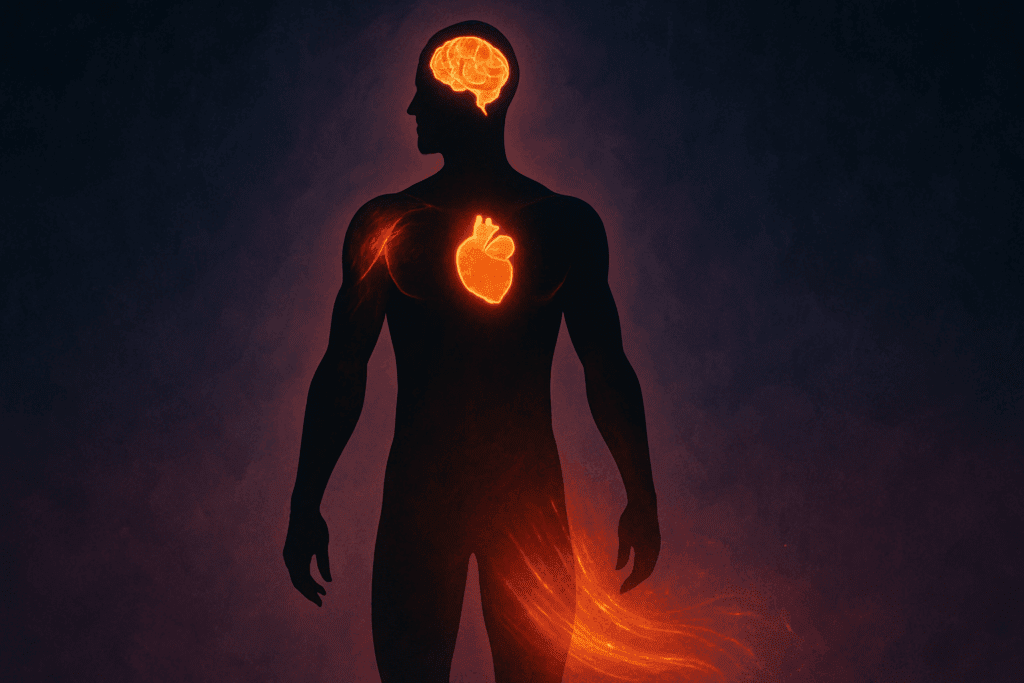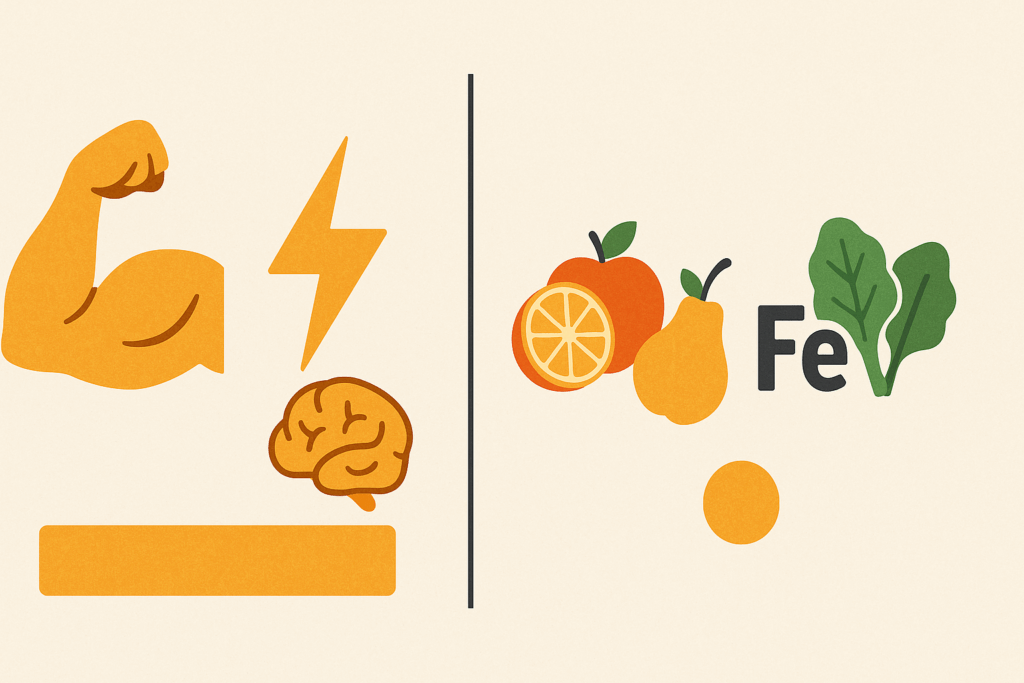Understanding the Foundations of Nutrition: Why Definitions Matter
When it comes to building a healthy diet, understanding the basics of nutrition is essential. However, many people struggle to distinguish between two fundamental categories: macronutrients vs micronutrients. This distinction plays a vital role in everything from energy production to immune function. But more than just a scientific classification, learning what the simple definition of macronutrients is—and how it contrasts with micronutrients—can empower smarter choices at the grocery store, on your plate, and in long-term health strategies. Knowing the right balance between macro and micro intake can mean the difference between thriving and simply getting by.
You may also like: How to Build a Healthy Meal Plan for the Week: Expert Tips for Balanced Nutrition and Long-Term Wellness

What Are Macronutrients? A Simple Definition with Big Implications
So, what are macronutrients exactly? At their core, macronutrients are nutrients that the body requires in large amounts to function properly. These include carbohydrates, proteins, and fats, all of which contribute to our daily energy needs. The macronutrient definition in food science centers around these nutrients’ ability to provide calories—four calories per gram for carbohydrates and proteins, and nine calories per gram for fats. This caloric yield highlights their primary function: fueling the body for daily activity, cellular processes, and survival.
In everyday terms, the macronutrient definition of food refers to those components in our meals that serve as the bulk of our dietary intake. When you eat a bowl of oatmeal with almond butter and fruit, you’re consuming all three macronutrients: carbohydrates from oats and fruit, fats from the almond butter, and proteins from both. These are practical macronutrients examples that help us see how critical they are in each bite we take.
Macronutrients in Cooking and Planning: How Nutrients Shape Meals
Beyond their scientific definition, macronutrients in cooking serve as the foundation for meal planning. Chefs and dietitians often talk about balancing macro ratios—whether for performance, weight management, or disease prevention. The macronutrient definition in cooking often emphasizes proportions—such as a 40/30/30 balance of carbs, proteins, and fats respectively.
Understanding whether fats are macro or micronutrients is vital here. Fats are macronutrients, not only for their energy density but also for their function in hormone regulation, brain health, and absorption of fat-soluble vitamins. The same goes for proteins. For those wondering, “Are proteins, fats or micronutrients?“—the answer is that both proteins and fats are macronutrients. Knowing this clarifies the essential role each plays in constructing a healthy diet.

Micronutrients Defined: Smaller in Size, Bigger Than You Think
While macronutrients dominate the discussion in diet trends, micronutrients are just as essential, albeit required in smaller quantities. These include vitamins like A, D, E, and K, and minerals like iron, zinc, and calcium. For example, someone may ask, “Is vitamin A a macro or a micro?” The answer is clear—vitamin A is a micronutrient, required in milligram or microgram amounts, and critical for processes like vision, cell division, and immunity.
The primary difference between macronutrients and micronutrients lies not just in quantity, but also in function. While macros provide energy and structure, micros act as cofactors and catalysts in metabolic reactions. Together, they work in harmony—micronutrients help break down macronutrients to generate usable energy, highlighting the interdependence between these nutrient groups.

What Do Macronutrients Do in the Body? From Energy to Structure
Each macronutrient plays a specific and irreplaceable role in bodily function. Proteins provide the building blocks—amino acids—that construct muscle tissue, enzymes, and neurotransmitters. Carbohydrates are the preferred fuel source for the brain and muscles, especially during intense physical activity. Fats, meanwhile, protect organs, serve as long-term energy storage, and support the structure of every cell membrane in your body.
So when people ask, “What does macronutrients do in the body?” the answer encompasses everything from producing movement to regulating body temperature. It also leads to another common question: “Our bodies are mostly made up of which macronutrients?” The primary macronutrients making up our tissues are water (often not included in the energy-providing group), followed by protein and fat. Carbohydrates, while less structurally prominent, are metabolically essential.

Macronutrients Meaning in Animal Nutrition: Broader Biological Relevance
The concept of macronutrients isn’t limited to human health—it plays a key role in animal nutrition as well. Veterinarians and farmers carefully manage the balance of carbohydrates, proteins, and fats in livestock diets to promote growth, reproduction, and immunity. Understanding macronutrients meaning in animal nutrition helps us appreciate how universal these nutrients are across species.
Animals, like humans, thrive when they receive a balanced ratio of macronutrients. In fact, dietary deficiencies or excesses in livestock often serve as a model for studying human nutritional needs. This cross-species understanding adds another layer of depth to the macronutrients vs micronutrients discussion, showing that the principles of proper nutrition transcend species boundaries.
Clarifying Confusion: Are Fats or Micronutrients? What About Proteins?
Many individuals encounter confusion when it comes to terminology. They may wonder, “Are fats or micronutrients?” or “Are proteins fats or micronutrients?” Both fats and proteins are macronutrients. The confusion often arises because both protein and fat are involved in complex bodily processes that might seem “micro” in function, such as hormone regulation or enzyme activity. But from a nutritional standpoint, they are macronutrients due to the volume we require them in and the caloric energy they supply.
This misclassification is why nutritional education must always return to the macronutrients definition—which is based on both quantity and physiological function. Clarifying these definitions helps eliminate dietary myths and improves confidence in meal planning and health decision-making.

What Is the Primary Difference Between Macronutrients and Micronutrients?
This question gets to the heart of nutritional literacy: “What is the primary between macronutrients and micronutrients?” The primary difference lies in both scale and function. Macronutrients are consumed in larger amounts and provide the energy necessary for survival and physical activity. Micronutrients, though required in smaller doses, play pivotal roles in supporting every physiological system in the body.
While a deficiency in macronutrients often presents quickly through fatigue or weight loss, micronutrient deficiencies can be subtler but no less severe. For example, a lack of iron or vitamin D may go unnoticed for months but lead to long-term complications like anemia or weakened bones. Therefore, while macronutrients power the body, micronutrients keep its intricate systems running smoothly.

Macronutrient Planning and Meal Prep: Knowledge in Action
The macronutrient definition cooking concept often comes into play when building meal plans or choosing recipes. For instance, a post-workout smoothie with Greek yogurt, berries, and chia seeds combines all three macronutrients in a functional, easy-to-digest form. Understanding what macronutrients nutrients are in different foods allows people to better meet their health goals, from fat loss to muscle gain to managing chronic illnesses.
Many nutritionists recommend using tools like macronutrient definition food drawings or portion guides to teach these principles in a visual, accessible way. Such tools help reinforce the macronutrients meaning by associating nutrients with real food rather than abstract terms, especially when teaching children, patients, or clients new to nutritional tracking.
From Science to Daily Life: What Are Macro Nutrients Doing for You Today?
The ultimate value of understanding macro and micronutrients lies in translating science into everyday choices. When someone understands what are macro nutrients, they begin to think more critically about their meals—not just in terms of taste or calories, but in terms of fuel and function. They ask themselves: Do I have enough protein to build and repair tissues? Am I getting enough healthy fats to support cognitive performance? Are my carbs coming from whole, fibrous sources that sustain energy?
This internal dialogue is how nutritional literacy evolves. It reflects a shift from dieting to nourishment, from restriction to intentionality. When we define macronutrients through a practical lens, we gain the tools to align our daily eating patterns with long-term wellness.
Frequently Asked Questions (FAQ): Macronutrients vs Micronutrients and Their Impact on Health
1. How do macronutrient needs change with age and lifestyle? Macronutrient needs shift throughout life depending on factors like age, activity level, and health conditions. For instance, older adults may require more protein to prevent muscle loss, while younger individuals might need more carbohydrates to fuel growth and high energy output. Active lifestyles increase the demand for carbohydrates and fats, especially in endurance athletes. Understanding what are macronutrients at each life stage allows for more tailored dietary plans, especially when monitoring energy balance. Integrating insights from the macronutrients definition into personalized health strategies helps ensure nutritional adequacy across a person’s lifespan.
2. Why do some nutrition plans focus heavily on tracking macronutrients? Many diet programs prioritize tracking macronutrients because it provides precise control over caloric intake and nutritional composition. Flexible dieting approaches like “If It Fits Your Macros” (IIFYM) rely on the macronutrient definition food principles to balance carbs, proteins, and fats for specific goals. This approach appeals to individuals interested in optimizing performance, aesthetics, or metabolic health. Tracking macronutrients vs micronutrients offers more actionable control over weight loss or muscle gain compared to calorie counting alone. For those asking what does macronutrients do in the body, the answer lies in their influence over energy production, hormonal regulation, and recovery.
3. Can the macronutrient balance in your diet affect mental health? Yes, macronutrient ratios can significantly influence mood, cognitive performance, and emotional resilience. Carbohydrates support serotonin production, which can improve mood and reduce anxiety. Fats, especially omega-3s, are essential for brain structure and function. Proteins provide amino acids that serve as precursors to neurotransmitters like dopamine and serotonin. So beyond the physical roles defined by the macronutrients definition, macronutrients nutrients have a profound psychological and neurological impact, highlighting the mind-body connection in nutrition.
4. How do macronutrients support recovery and immune function during illness or injury? During illness or recovery from injury, the body’s demand for certain macronutrients increases. Proteins are vital for tissue repair and immune cell production. Carbohydrates spare protein from being used as fuel, allowing it to focus on healing processes. Fats provide sustained energy and help absorb fat-soluble vitamins that regulate immunity. Understanding macronutrient definition cooking principles becomes important in these contexts, as meals may need to be softer, more nutrient-dense, or easier to digest. This is a practical way to apply what are macro nutrients in real-life healing scenarios.
5. In what ways does the environment influence macronutrient availability in animal nutrition? In agriculture, seasonal changes and regional climates greatly affect food quality and the macronutrients meaning in animal nutrition. For example, drought conditions can alter the carbohydrate and protein content in crops used for animal feed. Pasture-fed animals may receive more omega-3 fatty acids compared to grain-fed livestock. Farmers apply the same macronutrients and micronutrients principles seen in human health to ensure optimal animal growth, reproduction, and product quality. These adaptations underscore the universal nature of the macronutrients definition across species.
6. How do visual tools like macronutrient definition food drawings enhance learning? Visual tools such as macronutrient definition food drawings are effective in communicating abstract concepts through real-world imagery. These illustrations help individuals identify macronutrients examples in everyday meals, reinforcing the differences between macronutrients vs micronutrients. Visual learners particularly benefit from associating nutrient types with specific food sources, which enhances memory retention. Using these tools in nutrition education settings improves dietary literacy and empowers people to make better food choices. They are especially helpful when teaching what is the primary between macronutrients and micronutrients to children or beginners.
7. What are the psychological effects of incorrectly classifying macronutrients? Misunderstanding the roles of nutrients—for instance, asking are fats or micronutrients or are proteins fats or micronutrients—can lead to unnecessary food avoidance, guilt, or anxiety. Fats and proteins are macronutrients and should not be feared but rather incorporated wisely. Demonizing macronutrients may contribute to disordered eating patterns or an unbalanced diet. Educators must clearly define macronutrients and provide guidance to reduce confusion and promote a healthy relationship with food. Clarifying what the simple definition of macronutrients truly means can help neutralize nutrition myths and encourage evidence-based eating habits.
8. How does cooking method influence the macronutrient profile of food? The cooking process can significantly alter the macronutrient content and bioavailability of food. For example, frying adds fats, while boiling may reduce carbohydrate density if sugars leach into the water. Grilling may preserve protein content but alter fat composition. The macronutrient definition food is therefore dynamic and impacted by temperature, preparation style, and added ingredients. Applying macronutrient definition cooking techniques strategically allows individuals to preserve or enhance nutrient value while aligning meals with their dietary goals.
9. Are there emerging trends in using macronutrients therapeutically? Yes, therapeutic nutrition is increasingly using targeted macronutrient manipulation for health conditions. Ketogenic diets, for example, alter fat-to-carb ratios to manage epilepsy and support metabolic therapies in cancer. High-protein diets are used to combat sarcopenia in the elderly, while low-fat, high-carb diets may support certain cardiovascular protocols. These tailored applications reflect deeper insights into what are macronutrients and how they can be customized for individual needs. Understanding macronutrients nutrients as therapeutic tools rather than mere calorie sources elevates their role in functional medicine.
10. How can understanding macronutrients improve public health outcomes? Widespread education about macro and micronutrients can help combat chronic diseases like obesity, diabetes, and cardiovascular illness. When people understand that our bodies are mostly made up of which macronutrients, they begin to make more informed choices about food quality and portion sizes. Public health initiatives that integrate the macronutrients meaning into school curriculums or community programs promote long-term wellness. Knowing the difference between are fats macro or micronutrients, or understanding is vitamin A a macro or a micro, allows people to read labels more accurately and develop healthier habits. Ultimately, to define macronutrients clearly for the public is to equip them with the tools for sustainable health management.
Reflecting on Macronutrients and Micronutrients: A Balanced Approach to Lifelong Wellness
As we conclude, it’s important to reflect on what the simple definition of macronutrients truly reveals. At its core, it tells us that food is fuel, but not all fuel is equal. By understanding the relationship between macronutrients and micronutrients, we become better equipped to maintain health, prevent disease, and optimize our performance across all stages of life. This knowledge empowers us to reject fads, navigate nutritional misinformation, and make choices grounded in science and self-awareness.
Whether you’re an athlete adjusting your macros, a parent planning nutritious meals, or someone simply striving to feel better, the distinction between macro and micronutrients matters. It matters not just because it’s scientifically valid—but because it forms the foundation of how we nourish our bodies, minds, and lives. From protein-packed breakfasts to vitamin-rich vegetables, every bite becomes an opportunity to build a better, healthier future.
Further Reading:
Macronutrients 101: What to know about protein, carbs and fats
What to know about macronutrients


